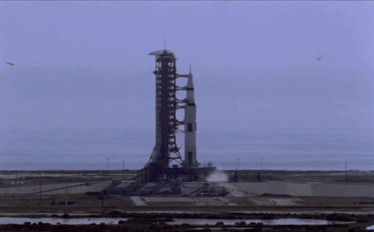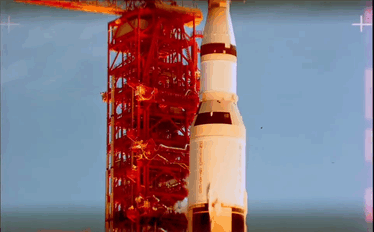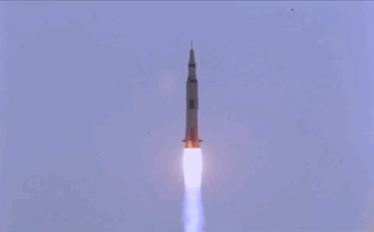2024 March 5

2024 March 5
NGC 2170: Angel Nebula Abstract Art Image Credit & Copyright: David Moulton
Explanation: Is this a painting or a photograph? In this celestial abstract art composed with a cosmic brush, dusty nebula NGC 2170, also known as the Angel Nebula, shines just above the image center. Reflecting the light of nearby hot stars, NGC 2170 is joined by other bluish reflection nebulae, a red emission region, many dark absorption nebulae, and a backdrop of colorful stars. Like the common household items that abstract painters often choose for their subjects, the clouds of gas, dust, and hot stars featured here are also commonly found in a setting like this one – a massive, star-forming molecular cloud in the constellation of the Unicorn (Monoceros). The giant molecular cloud, Mon R2, is impressively close, estimated to be only 2,400 light-years or so away. At that distance, this canvas would be over 60 light-years across.
∞ Source: apod.nasa.gov/apod/ap240305.html
More Posts from Ad-astra-affecte-spe and Others
Uranus- JWST NIRCam

This image also shows 14 of the planet’s 27 moons: Oberon, Titania, Umbriel, Juliet, Perdita, Rosalind, Puck, Belinda, Desdemona, Cressida, Ariel, Miranda, Bianca, and Portia.

This picture shows Uranus's north polar cap as well as a storm just below the polar edge.





Apollo 11 Launch
A universe in motion seen from the International Space Station during a night pass over Earth.
(@ wonderofscience on Twitter)
Timelapse created from images courtesy of the Earth Science and Remote Sensing Unit, NASA Johnson Space Center(ISS061-E-110520-111341 eol.jsc.nasa.gov).

Corona Australis
Nebula is mostly hydrogen gas, and a small amount of metals (elements above helium) which tend to be covered as "Dust", but it's the dust that best reflect the light of the stars, and as the largest and most energetic of them are blue, you get these areas of blue haze. Hydrogen more often glows red when bombarded by UV light, the two colours together quite magical.

The area has a number of NGC objects 6726,6727,6729 but born of the same huge molecular cloud.
Our Milky Way has many such areas full of star birth, and as blue giants are not long lived, supernova and star death too.

Did Betelgeuse Swallow a Binary Partner ?
The star hit the news back in late 2019 when it suddenly dimmed in an event known as the great dimming, and since there's been a lot of papers and theories to what really happened.

At the time, there was talk of supernova from a minority, while most astronomers reserved judgement on this, which turned out to be the right call, although even they had to admit bafflement at why this star suddenly become so dim.
Since, then the prevailing and mostly accepted theory is that the star ejected a huge amount of material which included carbon and thus concealed parts of the star, causing the dimming.

A new paper from Department of Physics and Astronomy at Louisiana State University has looked at another idea, that at some point in the recent past the star had consumed a binary partner.
While the study can only make suggestions at this point, some of the observed facts about Betelgeuse certainly fit the bill. The star spins very quickly for an old supersized red giant, even faster than our own sun, and the team believe a past consumption may have transferred energy to the star, accounting for this spin rate.
The next thing was that the super giant star didn't just dim, it rebounded and actually brightened considerably too. These events of material coming to the surface and briefly causing a brightening effect are predicted through models of this occurrence.
The star is not likely to go supernova anytime soon, but I would put bets on the likelihood of the star surprising us once again in the coming decades.




SPACEMAS DAY 2 ✨🪐🌎☄️☀️🌕
There's a new space telescope in the sky: Euclid. Equipped with two large panoramic cameras, Euclid captures light from the visible all the way to the near-infrared. It took five hours of observing for Euclid's 1.2-meter diameter primary mirror to capture, the 1000+ galaxies in the Perseus cluster which lies 250 million light years away. More than 100,000 galaxies are visible in the background, some as far away as 10 billion light years. Euclid's initial surveys, covering a third of the sky and recording over 2 billion galaxies, will enable a study of how dark matter and dark energy have shaped our universe.
Image Credit: ESA, NASA
-
 xploseof reblogged this · 1 year ago
xploseof reblogged this · 1 year ago -
 glacialdrip reblogged this · 1 year ago
glacialdrip reblogged this · 1 year ago -
 glacialdrip liked this · 1 year ago
glacialdrip liked this · 1 year ago -
 starryfull13 reblogged this · 1 year ago
starryfull13 reblogged this · 1 year ago -
 itscomplicatedx reblogged this · 1 year ago
itscomplicatedx reblogged this · 1 year ago -
 itscomplicatedx liked this · 1 year ago
itscomplicatedx liked this · 1 year ago -
 imrryr liked this · 1 year ago
imrryr liked this · 1 year ago -
 afragmentcastadrift reblogged this · 1 year ago
afragmentcastadrift reblogged this · 1 year ago -
 universe-in-the-void-in-the-cube reblogged this · 1 year ago
universe-in-the-void-in-the-cube reblogged this · 1 year ago -
 universe-in-the-void-in-the-cube liked this · 1 year ago
universe-in-the-void-in-the-cube liked this · 1 year ago -
 v0idsign reblogged this · 1 year ago
v0idsign reblogged this · 1 year ago -
 ad-astra-affecte-spe reblogged this · 1 year ago
ad-astra-affecte-spe reblogged this · 1 year ago -
 tum-blr-wont-let-me liked this · 1 year ago
tum-blr-wont-let-me liked this · 1 year ago -
 xploseof liked this · 1 year ago
xploseof liked this · 1 year ago -
 cosmicfeels reblogged this · 1 year ago
cosmicfeels reblogged this · 1 year ago -
 sillytyranttimemachine liked this · 1 year ago
sillytyranttimemachine liked this · 1 year ago -
 littleblackcloud1980 liked this · 1 year ago
littleblackcloud1980 liked this · 1 year ago -
 groovycreationshark liked this · 1 year ago
groovycreationshark liked this · 1 year ago -
 aalyshia liked this · 1 year ago
aalyshia liked this · 1 year ago -
 isparklystrangercyclelove reblogged this · 1 year ago
isparklystrangercyclelove reblogged this · 1 year ago -
 isparklystrangercyclelove liked this · 1 year ago
isparklystrangercyclelove liked this · 1 year ago -
 pitchsilent liked this · 1 year ago
pitchsilent liked this · 1 year ago -
 andromeda1023 reblogged this · 1 year ago
andromeda1023 reblogged this · 1 year ago -
 andromeda1023 liked this · 1 year ago
andromeda1023 liked this · 1 year ago -
 pocketmonster25 liked this · 1 year ago
pocketmonster25 liked this · 1 year ago -
 leptoquark3 liked this · 1 year ago
leptoquark3 liked this · 1 year ago -
 theladygrey liked this · 1 year ago
theladygrey liked this · 1 year ago -
 cosmic-espero reblogged this · 1 year ago
cosmic-espero reblogged this · 1 year ago -
 cosmic-espero liked this · 1 year ago
cosmic-espero liked this · 1 year ago -
 elfpylon liked this · 1 year ago
elfpylon liked this · 1 year ago -
 technicontrastron reblogged this · 1 year ago
technicontrastron reblogged this · 1 year ago -
 technicontrastron liked this · 1 year ago
technicontrastron liked this · 1 year ago -
 that-one-queer-poc liked this · 1 year ago
that-one-queer-poc liked this · 1 year ago -
 sugarbutts liked this · 1 year ago
sugarbutts liked this · 1 year ago -
 sugarbutts reblogged this · 1 year ago
sugarbutts reblogged this · 1 year ago -
 sweden55trc liked this · 1 year ago
sweden55trc liked this · 1 year ago -
 notthisvirgin liked this · 1 year ago
notthisvirgin liked this · 1 year ago -
 paradise-restored liked this · 1 year ago
paradise-restored liked this · 1 year ago -
 ronaldsprowel liked this · 1 year ago
ronaldsprowel liked this · 1 year ago -
 colohunter liked this · 1 year ago
colohunter liked this · 1 year ago -
 galaxy-starshine reblogged this · 1 year ago
galaxy-starshine reblogged this · 1 year ago -
 little-flame-prince reblogged this · 1 year ago
little-flame-prince reblogged this · 1 year ago -
 fuckyeahcelestialthings reblogged this · 1 year ago
fuckyeahcelestialthings reblogged this · 1 year ago -
 bluestaratsunrise reblogged this · 1 year ago
bluestaratsunrise reblogged this · 1 year ago -
 bluestaratsunrise liked this · 1 year ago
bluestaratsunrise liked this · 1 year ago -
 silvereyedowl liked this · 1 year ago
silvereyedowl liked this · 1 year ago

★•Astronomy, Physics, and Aerospace•★ Original and Reblogged Content curated by a NASA Solar System Ambassador
204 posts




